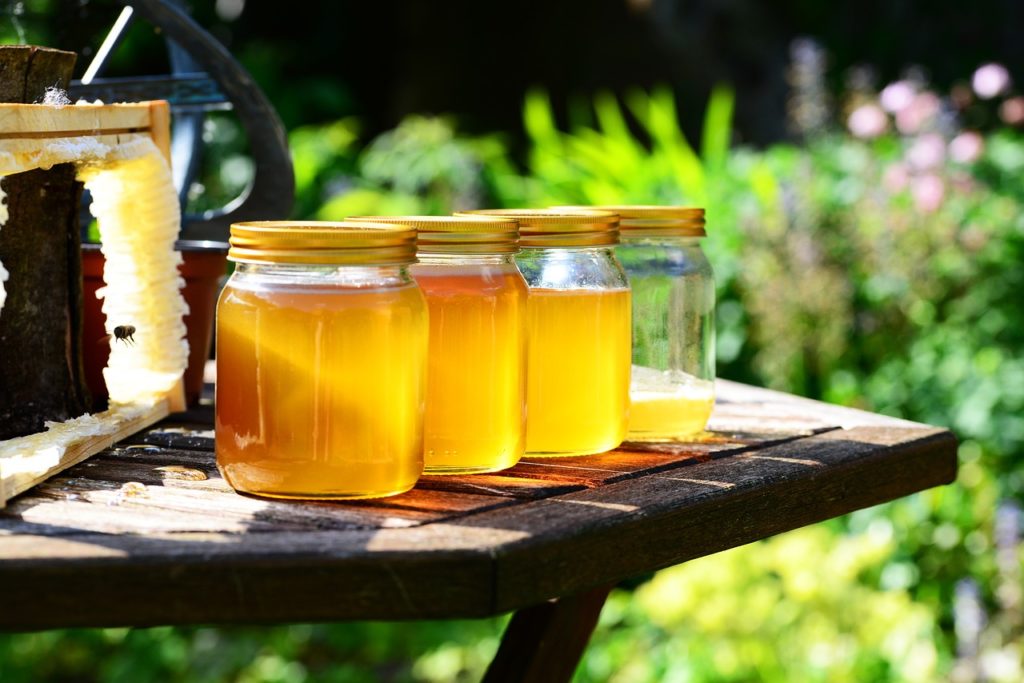 By Lu Xiao
By Lu Xiao
The United States conducted many nuclear tests in the 1950s and 1960s. Recently, it was discovered that the legacy of these tests can remain for decades in American honey, according to a report.
After World War II, the United States and other countries, including China and the former Soviet Union, performed hundreds of above-ground nuclear tests. These bombs ejected a chemical element called radiocesium (a radioactive form of the element cesium) into the atmosphere.
Winds then spread the substance around the world until it fell out of the skies in microscopic particles.
Due to regional wind and rainfall patterns, the spread was not uniform. For instance, the U.S. East Coast received far more contamination than some other places, according to the report.
The recent research started with a spring break assignment. James Kaste, a geologist at the College of William & Mary in Williamsburg, Virginia, asked his undergraduate students to bring back local foods from their spring break destinations to test for radiocesium.
One student returned with honey from Raleigh, North Carolina. To Kaste’s surprise, it contained cesium in levels 100 times higher than in the rest of the samples, the report stated.
Radiocesium is water-soluble, and plants sometimes mistake it for potassium, a nutrient with similar chemical properties. Kaste and his students started their project in order to find out whether plants are still taking in this nuclear contaminant.
After finding the cesium in the honey, Kaste and his colleagues collected 122 samples of locally produced raw honey from various parts of the eastern United States and tested them for radiocesium.
Natural and Non-Toxic Products. Up to 50% Off – Every Day (Ad)
“It’s really quite incredible,” Daniel Richter, a soil scientist at Duke University not involved with the study, said in the report.
He added that the study showed that the nuclear fallout “is still out there and disguising itself as a major nutrient.”
The results showed that there was radiocesium in 68 of the samples, at levels above 0.03 becquerels per kilogram, or about 870,000 atoms of radiocesium per tablespoon. A Florida sample had the highest levels of radioactivity at 19.1 becquerels per kilogram.
The results indicate that even after five decades, radioactive leftovers are still cycling among plants and animals thousands of miles from the nearest nuclear test site.
Nevertheless, such levels of radioactive elements are not believed to be a danger.
The U.S. Food and Drug Administration was quoted in the report as saying that the radiocesium levels discovered in the new study are far below 1200 becquerels per kilogram, the food safety cutoff.
“I’m not trying to tell people they shouldn’t eat honey. I feed my kids honey,” Kaste said in a statement.
“I eat more honey now than I did when I started this project.”
However, it is possible that honey in the past contained more radiocesium, since the radioactive element decays over time.
Kaste’s team searched through records of cesium testing in milk, and they analyzed archived samples of plants. They found that radiocesium levels had fallen sharply since the 1960s.
“What we see today is a small fraction of the radiation that was present during the 1960s and 1970s,” Kaste said in the statement. “And we can’t say for sure if cesium-137 has anything to do with bee colony collapse or the decline of population.”
The new findings raise questions about how cesium has impacted bees in the past 50 years, biogeochemist Justin Richardson said according to the report.
“They’re getting wiped out from pesticides, but there are other lesser known toxic impacts from humans, like fallout, that can affect their survival,” he added.
Geologist Thure Cerling said in the report that the new findings are no reason for alarm over today’s honey, but understanding how nuclear contaminants travel around is important for measuring the health of ecosystems and agriculture.
“We need to pay attention to these things,” Cerling added.
The new research was described in a paper in Nature Communications.
Sourced from Zero Hedge
Source link
[ad_2]
source https://earn8online.com/index.php/254156/radioactive-residue-from-bomb-tests-decades-ago-are-found-in-honey/
No comments:
Post a Comment